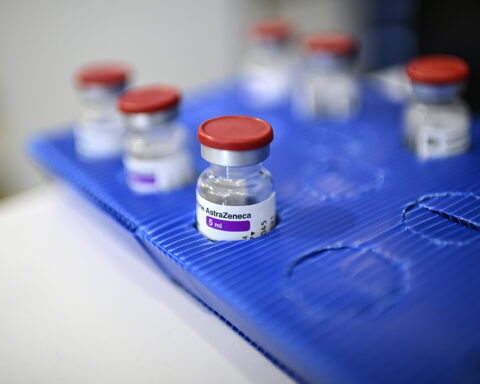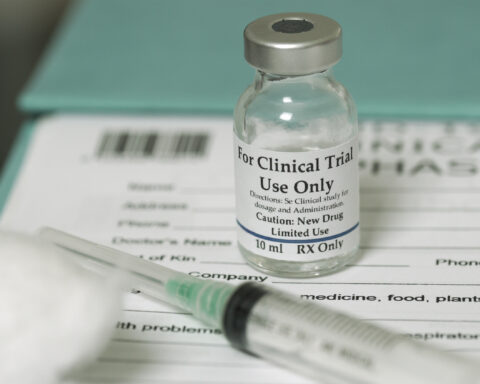Exactly one year after the World Health Organization declared the novel coronavirus a pandemic and about three months since the first Americans outside of clinical trials got shots, one in 10 people in the US are fully vaccinated against Covid-19.
The US Centers for Disease Control and Prevention reported on its website that at least 33.9 million Americans are protected with either a one-dose or two-dose vaccine.
One vaccine expert is concerned that as case numbers fall and days get warmer and longer, many people will forgo getting a shot.
“I think we are going to get fooled.” Dr. Paul Offit, director of the Vaccine Education Center at Children’s Hospital of Philadelphia, said. “I think what’s going to happen is you’re going to see that as we enter the summer months, numbers are going to go down, people will think great, we’re good.”
If the United States doesn’t reach 80% of the population having immunity via inoculations because people lost interest in being vaccinated, another surge is possible, he said.
But the rise in cases late this year could be less significant if more than 260 million get their shots.
“I think when next winter comes, because this virus isn’t going away, (if we get to 80% vaccinated) we’ll see a bump instead of a surge,” Offit said at a virtual event hosted by the Aspen Institute, an educational and policy studies organization, “and that’d be the test of how well we’ve done with getting this in hand.”
The vaccine news came ahead of President Joe Biden’s address to Americans on Thursday night about the pandemic and the next chapter.
Biden said he was directing states to open coronavirus vaccine eligibility to all adults (those older than 18) by May 1.
Preliminary CDC data shows 2020 deadliest year for US
Largely because of the pandemic, 2020 appears to have been the deadliest year in the recorded history of the United States — at least since 1900, according to early data from the CDC.
The health agency said in an email that its analysis suggests 2020 was the deadliest year in recorded history in terms of total number of deaths, and there was a 15% increase in the US death rate last year because of the pandemic.
“We are working on a future report, but the underlying data on which the report is based are already available from our website,” a CDC spokesperson wrote in the email.
For now, provisional data online shows that last year, 3,362,151 people died from all causes in the United States. Among those deaths, 378,292 involved Covid-19, according to the CDC data. With the US population being around 330 million people, about 3.3 million deaths represents 1% of the nation’s total population.
Total deaths last year were 18% higher than expected relative to recent years, according to the provisional data on the CDC’s website.
Overall, “2020 will have been the deadliest by far as long as we’ve kept records and almost certainly as long as the US has existed,” Bob Anderson, chief mortality statistician for the CDC, told CNN on Thursday. But, he added, you have to account for population growth and also aging of the population.
The longest year
More than 29 million cases and 530,000 deaths have been reported in the United States since March 11, 2020.
The virus plunged America into grief and crisis. Several rounds of steep surges in infections prompted local and state leaders from coast to coast to order safety restrictions — in some cases, curfews — hoping to curb the deadly spread. Waves of Covid-19 patients crippled health care systems.
“After a year of this fight, we are tired, we are lonely, we are impatient,” CDC Director Dr. Rochelle Walensky said in a statement Thursday. “There have been too many missed family gatherings, too many lost milestones and opportunities, too many sacrifices.”
On this day last year, Dr. Anthony Fauci, director of the National Institute of Allergy and Infectious Diseases, told a congressional hearing that “things are going to get much worse before they get better.”
“But I did not in my mind think that much worse was going to be 525,000 deaths,” he said Thursday on NBC’s “Today” show.
Now, the country is at a pivotal point.
Case numbers, after plateauing at high levels, may be beginning to decline again, Walensky said at a White House briefing Wednesday. Average hospital admissions and Covid-19 deaths were also down over the past week, she added.
“While these trends are starting to head in the right direction, the number of cases, hospitalizations and deaths still remain too high and are somber reminders that we must remain vigilant as we work to scale up our vaccination efforts across this country,” Walensky said.
Some experts have warned another possible surge could be weeks away, fueled by a highly contagious variant spreading across the country.
Michael Osterholm, director of the Center for Infectious Disease Research and Policy at the University of Minnesota, said the US is at a “perfect-storm moment.” The B.1.1.7 variant — first reported in the United Kingdom — has “transmission unlike I’ve seen any at all since this pandemic began” in some areas, particularly in Florida, Texas and Georgia.
“And, remember, this is coming at us at the very same time we’re opening up America as if there is nothing else happening,” Osterholm said on CNN’s “New Day.”
He added, “I think the dynamics of the virus right now, I’m afraid, are going to beat us at the vaccination game.”
What will help now, while the country works to boost its vaccination numbers, are the precautions that have been touted by officials for months: face masks, social distancing, avoiding crowds, washing hands.
And it’s especially crucial, according to experts, that Americans heed this guidance, even as more governors announce it’s time to begin loosening Covid-19 restrictions and paving the way for a return to normal.
Covid-19 model foresees more deaths with Americans increasingly on the move
A Covid-19 forecast from a group at the University of Washington said Thursday that with Americans more on the move, with fewer people wearing masks and with coronavirus variants infecting more people, the death toll in the United States by July 1 will be tens of thousands higher than previously predicted.
The researchers project 598,523 Americans will have died of Covid-19 by July 1, more than 22,000 fatalities higher than a forecast released four days ago.
“Over the last week the US has seen the largest one-week increase in mobility since the pandemic began,” the Institute for Health Metrics and Evaluation team wrote in an analysis containing data through March 8. “This huge jump in mobility means 22 states have mobility levels within 10% of the pre-COVID-19 baseline.”
Mask use has dropped from 75% in January to 73% in the first days of March, the IHME team said.
The latest projection is based on a scenario that accounts for continued spread of the B.1.1.7 virus variant in some locations and scaling up of Covid-19 vaccination in the United States over the next few months. Under this “most likely” scenario, the projected total of deaths each day in the United States could drop from 1,395 to 86 and about 75,000 people will die between now and July.
Covid ends blue-blood basketball program’s season
Last March 11, sports helped make clear how serious the pandemic was when the NBA suspended its season. The following day the NHL and MLS followed in taking breaks.
On that Thursday, Duke University called off spring sports and shut down its men’s basketball team in the middle of the ACC tournament. The same day, other conferences canceled their tournaments and the NCAA said there would be no no March Madness — or spring sports.
The Blue Devils’ season ended prematurely again Thursday after a member of the program tested positive for the coronavirus following a game Wednesday.
“We wish every team still playing college basketball good health and the very best during the next few weeks,” said Kevin White, Duke athletics director, in announcing the men’s basketball team would not play again this season.
This will be the first time the powerhouse program that has won five national championships will not play in the NCAA tournament since the 1994-95 season.
The news comes a few days after the university’s football program announced it was pausing the team’s offseason activities because of a cluster of cases.
In December, the Duke women’s team opted out of playing the rest of its season after some positive test results.




